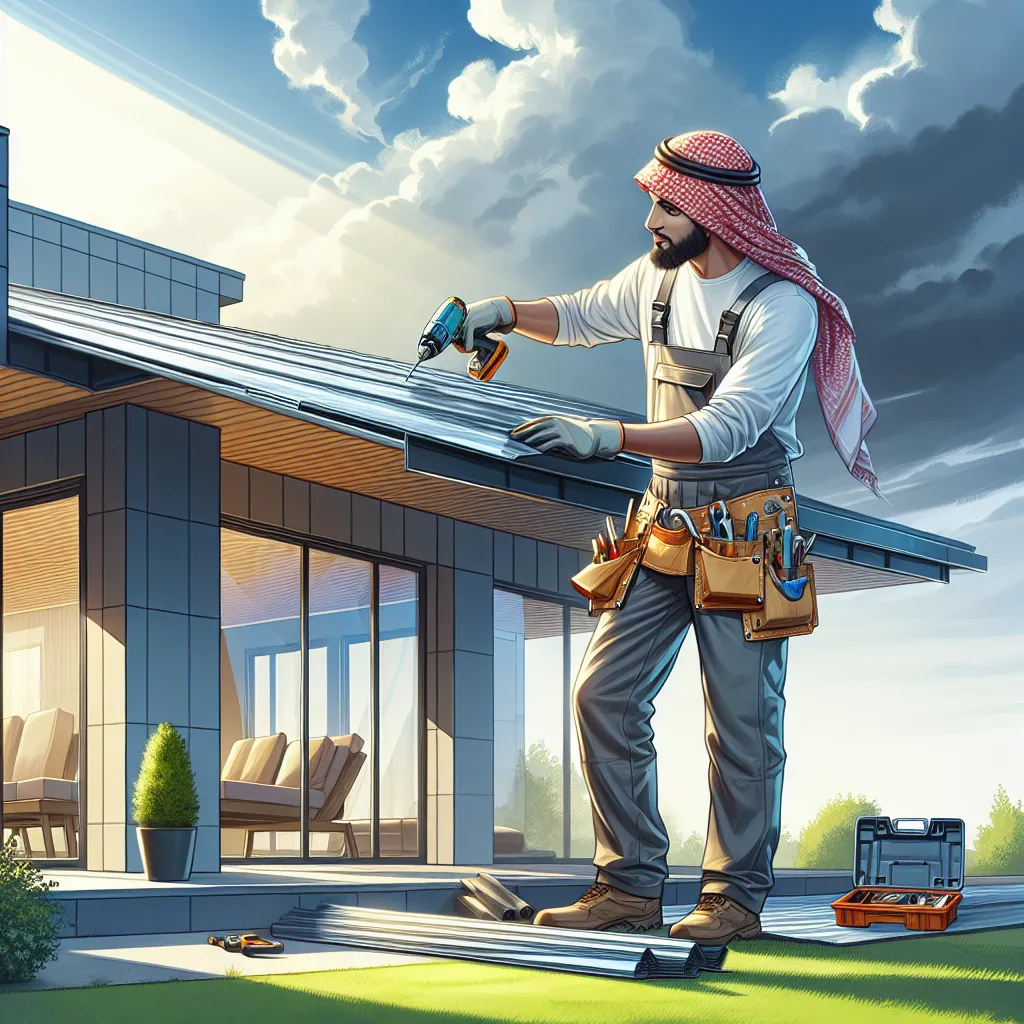For years, we’ve been told that steel metal roofing is only for barns or industrial warehouses. But here’s the thing—more homeowners and businesses are switching to steel metal roofing because it’s cost-effective, stylish, and lasts like a champ. Whether you’re fixing up your first home, building a workshop, or running a busy farm, steel metal roofing is a choice that actually makes life easier. Let’s break it down and see how it stacks up, why it matters, and what you need to know before making the leap.
What Is Steel Metal Roofing?
Steel metal roofing is a roofing solution made from panels or shingles crafted out of steel. These roofs can come painted or coated, with various profiles, such as AG Panel, R-Panel, and Snap Lock Panel. They’re not just industrial—they fit right in on homes, barns, sheds, and commercial buildings. Steel metal roofing stands out because it’s durable, customizable, and often backed by long warranties.
Why Steel Metal Roofing Matters
Why do people keep choosing steel metal roofing? Here’s why:
– Long lifespan: Many steel roofs last 40–70 years.
– Weather resistance: Steel handles snow, rain, hail, and high winds.
– Low maintenance: Forget about constant repairs.
– Sustainability: Most steel roofing is recyclable.
Let’s face it, when the storm hits, we want a roof that laughs in the face of hailstones.
Key Benefits of Steel Metal Roofing
1. Durability and Longevity
Steel metal roofing isn’t just tough—it’s almost stubborn. It resists rust, warping, and corrosion, especially with premium coatings like Galvalume or WeatherXL SMP. We’re talking decades, not just years, of reliable shelter.
2. Versatility in Design
Who says metal can’t be beautiful? With profiles like Snap Lock Panel and a range of color paint codes (Polar White, Charcoal, Burnished Slate, Hunter Green, and more), steel metal roofing offers both modern and classic looks.
| Profile Type | Best For | Common Gauges | Color Options |
|---|---|---|---|
| AG Panel | Residential, Barns | 26, 29 | 15+ Paint Colors |
| R-Panel | Commercial, Sheds | 26, 29 | 12+ Paint Colors |
| Snap Lock | High-End Residential | 26 | Full Color Spectrum |
3. Fast and Flexible Installation
Some manufacturers—like —are known for rapid manufacturing and delivery, helping builders complete jobs on time. Custom lengths, full job packs, and a wide selection of fasteners (Hi-Lo screws, Master Grip, Lap screws) make installation quick and hassle-free.
4. Energy Efficiency
Steel metal roofing reflects sunlight and heat, keeping buildings cooler and reducing energy bills. Add insulation, and you’ve got a roof that works double-time.
5. Minimal Maintenance
We’ve all had that one roof that sheds shingles every windy day. Steel metal roofing, with its interlocking panels and high-quality fasteners, stays put and shrugs off the elements. Just hose it down once in a while, and it keeps looking sharp.
Drawbacks of Steel Metal Roofing
We’d be sugarcoating it if we said steel metal roofing is perfect for everyone. Here are a few things to keep in mind:
- Upfront cost: It often costs more than asphalt shingles. But, like buying a good pair of boots, it pays off over time.
- Noise: Rain on a steel roof can be loud, like a drum solo. Insulation helps, but it’s something to consider.
- Denting: While tough, major hail can dent steel panels, especially thinner gauges.
- Color variability: Colors may look different in person than on a screen. Always get a physical sample before buying.
Table: Quick Pros and Cons
| Benefit | Drawback |
|---|---|
| Lasts 40–70 years | Higher initial cost |
| Resistant to weather | Possible noise in rain |
| Low maintenance | Potential for denting |
| Many color options | Color may not match |
Practical Use Cases for Steel Metal Roofing
Steel metal roofing isn’t just for factories. Here’s where it shines:
Residential Homes
Want a roof that’s both stylish and practical? Steel panels or shingles add major curb appeal and value. Whether it’s a farmhouse look with Rustic Red or a sleek modern style in Charcoal, there’s a match for every home.
Agricultural Buildings
Barns, equipment sheds, and workshops need roofs that can take a beating. Steel metal roofing, especially AG Panel or R-Panel in thick gauges, is up to the task.
Light Commercial Projects
Steel roofs are a no-brainer for offices, retail buildings, and warehouses. The quick installation and low maintenance keep costs in check over the years.
How to Choose the Right Steel Metal Roofing
Here’s how we figure out what fits best, without getting lost in the weeds:
1. Gauge and Strength
- Gauge matters: 26-gauge is thicker and stronger than 29-gauge.
- Consider the climate: Heavy snow? Go thicker.
2. Coatings and Paint
- Galvalume: For maximum corrosion protection.
- Paint systems: WeatherXL SMP and similar offer long-lasting color.
3. Profile Type
- AG Panel: Classic and versatile.
- R-Panel: Rugged and great for larger spans.
- Snap Lock Panel: Sleek, modern, and often used for high-end homes.
4. Color and Finish
Get a sample. Screens lie—nothing beats seeing the real color.
5. Accessories
Don’t forget the small stuff: screws, clips, closures, trim, touch-up paint, and caulking. The right accessories keep your roof tight and weatherproof.
6. Cost and Warranty
Compare installation and material costs, but also ask about warranties. A limited lifetime warranty is common with quality steel metal roofing.
Graph: Estimated Cost Range per Square Foot
steel metal roofing
Steel metal roofing is a durable, long-lasting, and cost-effective roofing solution designed to withstand harsh weather conditions. It offers a perfect balance between strength, style, and affordability.
Key Benefits
- Longevity: Lasts 40–70 years with proper coating.
- Weather Resistance: Handles hail, wind, snow, and rain.
- Low Maintenance: Minimal repairs, saving money over time.
- Eco-Friendly: Recyclable material.
How It Compares
| Material | Cost per Year | Durability | Maintenance | Environmental Impact |
|---|---|---|---|---|
| Asphalt Shingles | Medium | 15-20 years | High | Low |
| Steel Metal | High upfront | 40-70 years | Low | High (recyclable) |
Graph: Cost over time shows steel’s higher initial investment but lower long-term costs.
Choosing steel metal roofing means investing in a roof that pays off over decades. Ready to upgrade? Contact us today for quality steel roofing options tailored to your needs!
Frequently Asked Questions About Steel Metal Roofing
Is steel metal roofing worth the higher upfront cost?
Yes, steel metal roofing lasts decades longer than most roofing options, often paying for itself through reduced repairs and replacements over time.
Will a steel roof make my home noisy during storms?
It can be noisy, but proper insulation and underlayment significantly reduce the sound of rain or hail, making it barely noticeable for most homeowners.
Does steel metal roofing rust over time?
Not if it has the right coatings and paint systems like Galvalume or WeatherXL SMP, which protect against corrosion for many years.
Can I install solar panels on steel metal roofing?
Absolutely, steel roofs are ideal for solar panel mounting due to their strength and durability, supporting renewable energy systems effectively.
How does steel metal roofing handle extreme weather?
Steel metal roofing resists wind, hail, snow, and fire better than many other materials, especially when thicker gauges are used for added protection.


